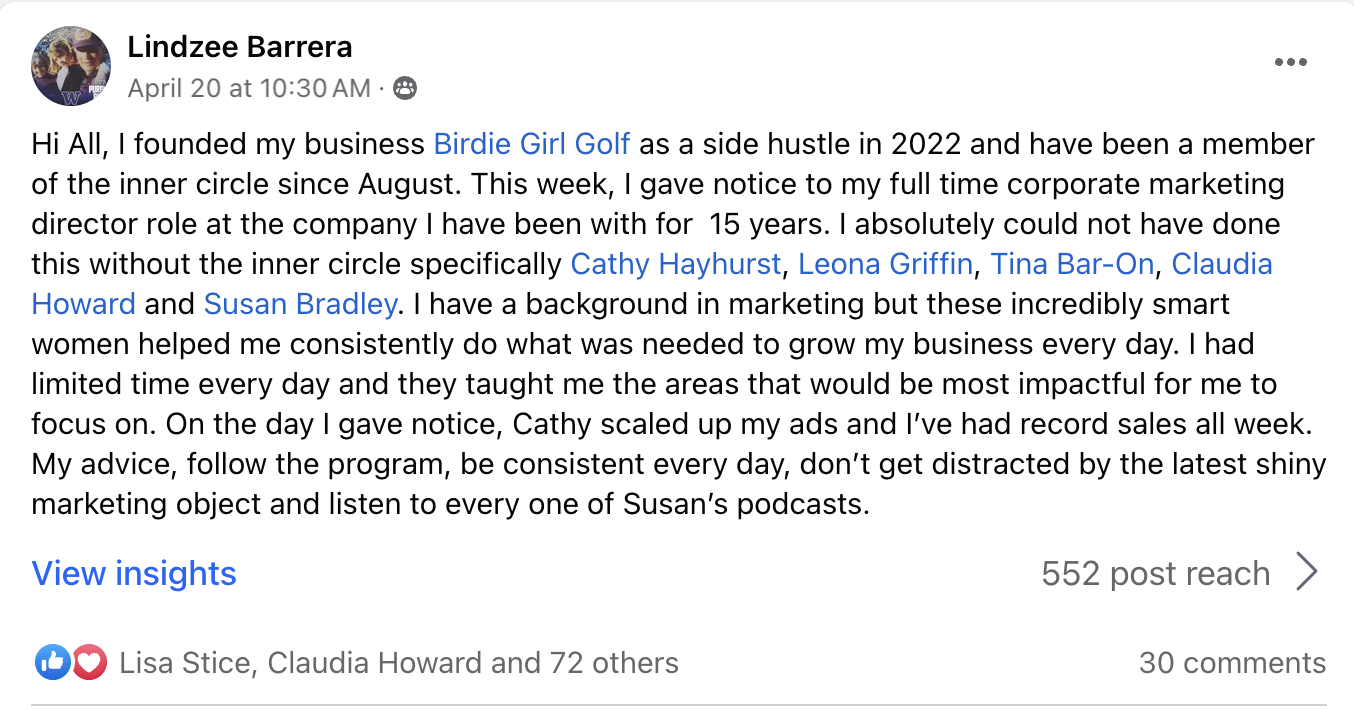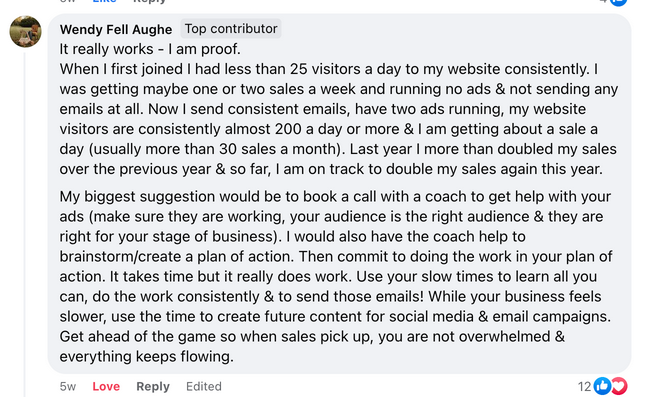
The $500/Hour Job You Should Be Doing, Episode 226
No time to listen now? We'll send it to your inbox.
No time to listen now? We'll send it to your inbox.
or scroll down to get the highlights

The $500 an Hour Job You’re Probably Not Doing
Here’s an easy question – would you rather get paid $15 per hour or $500? Exactly. So today I want to talk about the $500/hr job that you’re probably not doing, and what could change for your business if you did.
First things first, not all tasks in your business have the same impact on your results. Even though you’re working hard, maybe even putting in way more hours than you’d like, the truth is that some tasks are way more valuable than others. Just knowing this can help you make better decisions going forward.
We often resist delegating tasks because we think we’re the only ones who can do them right. But here’s the thing – you need to recognize the true cost of your time and the impact of each task. There are $15 an hour jobs, $50 an hour jobs, and then there’s the $500 an hour job.
So, what is this $500 an hour job? It’s simple but powerful – getting super clear on what you want to happen in your business. It’s all about assessing where you are right now and deciding what work needs to be done to get you where you want to go. This clarity is crucial for your success.
Now, once you have a plan, you need to qualify it. This is a step that many people skip. It’s not enough to just throw out a number and hope for the best. You need to ask yourself if your goals are realistic and achievable based on where you are right now.
For example, one of the members of my VIP group wanted to add $60,000 to her annual sales. She had a high-ticket item with a high average order value, but she didn’t know how to get those extra sales. We broke it down together, figuring out the exact number of orders needed per month and how to achieve that.
Steps to Achieve the $500 an Hour Work
Creating a plan is essential, but you also need to break it down into actionable steps. What’s it going to take to transition from where you are today to where you want to be? This is the $500 an hour work that has the biggest impact on your results.
Strategic planning is more than just checking off tasks. It’s about taking control of your business direction. When you have a clear plan and know your goals, you can focus on what truly matters and make confident decisions.
Mastermind Accelerator Program
Over the years, I’ve done many strategy calls with business owners. These calls are great, but I’ve realized that people need ongoing support and accountability to reach their goals. That’s why I’ve decided to change my approach.
I’m excited to announce a six-month mastermind accelerator program starting in September. This program is for six and seven-figure store owners, focusing on creating and implementing strategic plans. We’ll work together to ensure your plans are realistic and aligned with your goals.
If you’re just starting out or not at the six-figure mark yet, I encourage you to go back and listen to Episode 109. Invest a couple of hours in this $500 an hour work. It will give you big clarity on where you are and where you need to be, reduce decision overwhelm, and boost your confidence.
We often get stuck working through task lists, which keeps us where we are. Planning and strategic thinking are crucial to moving forward. I hope this helps you take the next step in your business journey.
RELATED LINKS:
Stop Overwhelm And Get On The Right Track
https://thesocialsalesgirls.com/do-you-have-the-right-goals-episode-109/
The REAL Source of Stress For 6 and 7-Figure Businesses
How To Do Less And Get Better Results
https://thesocialsalesgirls.com/how-to-do-less-and-get-better-results-episode-210/
Do You Have These 7 Habits That Predict Success?
https://thesocialsalesgirls.com/do-you-have-these-7-habits-that-predict-success-episode-205/










